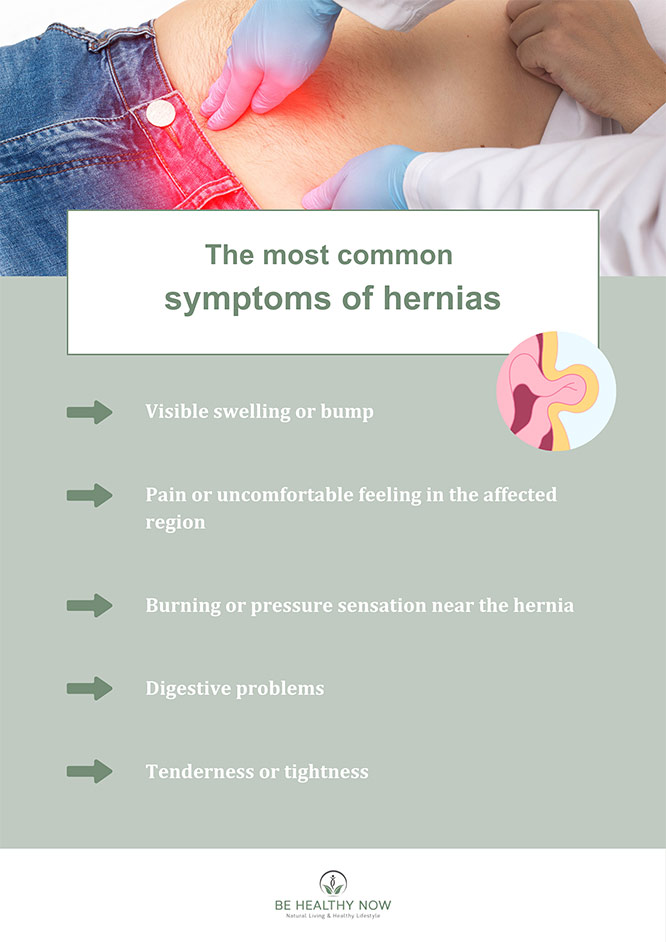
In this comprehensive guide, we delve into the world of hernia surgery, shedding light on this common condition that affects millions of individuals worldwide. From defining hernias to exploring the causes, symptoms, and available treatment options, we aim to empower our readers with the knowledge necessary to make informed decisions about their healthcare.
Whether you are seeking information for yourself or supporting a loved one through hernia surgery, this article will provide a detailed understanding of the topic, help you identify a hernia and show how to prevent them. Together, let’s embark on a journey to wellness and healing.
Understanding Hernias
A hernia occurs when an organ or tissue protrudes through a weak spot in the surrounding muscle or connective tissue. There are several types of hernias, each affecting different areas of the body.
The most common types include:
- inguinal hernias, which occur in the groin area;
- femoral hernias, located in the upper thigh;
- umbilical hernias, around the navel;
- hiatal hernias, involving the diaphragm and upper stomach; and
- incisional hernias, which develop at the site of a previous surgical incision.
In the following sections, we will explore the symptoms and risk factors for hernias, the surgical options available for hernia repair, as well tips that help prevent a hernia. By gaining a deeper understanding of these aspects, readers will be better equipped to recognize and address this condition.
- For anyone interested in a detailed look at medical-grade information about inguinal hernia anatomy and surgery techniques to treat them can be found here.
Identifying Hernias
Identifying a hernia can be done by recognizing specific symptoms. If you experience any of the following symptoms, you should immediately visit your doctor’s office or even drive to the nearest ER:
- localized pain or discomfort,
- a visible or palpable bulge or swelling,
- potential complications such as nausea and vomiting, or
- difficulty swallowing in the case of hiatal hernias.
It’s important to note that some hernias may be asymptomatic, making regular medical check-ups crucial for early detection, especially if any of the following risk factors apply to you.
Causes and Risk Factors for Hernias
Understanding the causes and risk factors associated with hernias is vital in recognizing or preventing their occurrence. Several factors can contribute to the development of hernias, such as:
- age,
- obesity,
- heavy lifting,
- chronic coughing, and
- previous surgical incisions.
- For example, hernias are a common sports injury for weightlifters and those who handle weights incorrectly.
By identifying these risk factors and making lifestyle adjustments, individuals can potentially reduce their chances of developing a hernia.

Prevention Tips for Hernias
While hernias can sometimes occur despite our best efforts, there are preventive measures that individuals can take to reduce the risk of developing hernias. Here are some helpful tips for hernia prevention:
- Maintain a Healthy Weight: Excess weight and obesity can put additional strain on the muscles and increase the risk of developing hernias. By reducing their weight, individuals can reduce the strain on their muscles and connective tissues.
- Lift Properly: When lifting heavy objects, it’s crucial to use proper lifting techniques to minimize strain on the muscles. Bend at the knees and lift with the legs rather than the back. Avoid lifting objects that are too heavy for you, and if necessary, ask for assistance.
- Avoid Straining During Bowel Movements: Straining during bowel movements can put pressure on the abdominal muscles and increase the risk of developing hernias, especially in the groin area. To prevent this, maintain a diet high in fiber and drink plenty of water to promote regular and smooth bowel movements.
- Quit Smoking: Smoking can weaken the tissues and impair the healing process, making individuals more susceptible to hernias.
- Strengthen Abdominal Muscles: Regular exercise that focuses on strengthening the abdominal muscles can help improve muscle tone and support the abdominal wall. Core-strengthening exercises such as planks, sit-ups, and Pilates can be beneficial.
- Practice Good Posture: Maintaining good posture throughout the day helps distribute weight evenly and reduces strain on the muscles and connective tissues. Be mindful of your posture when sitting, standing, and lifting objects.
- Treat Persistent Coughs: Chronic coughing can put strain on the abdominal muscles, potentially leading to hernias. If you have a persistent cough, seek medical attention to identify and treat the underlying cause.
By implementing these preventive measures into your daily life, you can reduce the risk of developing hernias and promote overall abdominal health. Remember to consult with your healthcare provider for personalized advice and guidance based on your specific circumstances.
Surgical Options
Surgical intervention is often necessary to repair the weakened area and prevent further complications. These are the most common surgeries and techniques used to repair hernias:
- Open Hernia Repair
Open hernia repair is a traditional surgical approach that involves making a larger incision near the hernia site. During the procedure, the surgeon manually pushes the protruding organ or tissue back into place and reinforces the weakened area with sutures or surgical mesh.
- Open hernia repair allows for direct visualization of the hernia, making it suitable for complex and urgent cases or when the hernia is too large to be repaired laparoscopically.
- Laparoscopic Hernia Repair
Laparoscopic hernia repair is a minimally invasive technique. With the assistance of a laparoscope, a thin tube with a camera, the surgeon inserts the instruments through a small cut and repairs the hernia without open access to the organs.
- This approach offers several advantages, including smaller incisions, reduced post-operative pain, quicker recovery, and potentially less scarring. However, it is not always applicable.
- Hernia Repair Techniques
The two primary techniques used for hernia repair in either surgery are herniorrhaphy (closing openings by returning displaced tissues to their proper position) and hernioplasty (reinforcing weakened areas with additional materials, such as mesh).
- The selection of the technique depends on factors such as the size and type of hernia, patient factors, and surgeon expertise.
- Hernia Mesh
In both open and laparoscopic hernia repairs, the use of hernia mesh is common. Hernia mesh is a synthetic or biological material that provides additional support to the weakened tissue, reducing the risk of recurrence. The mesh can be placed either on top of the defect (onlay) or within the muscle layers (sub or underlay technique).
- The choice of mesh type and placement depends on factors such as the size and location of the hernia, patient characteristics, and surgeon preference.
During the decision-making process, the surgeon considers several factors, including the type and size of the hernia, the patient’s overall health, and the surgeon’s experience and preference.
- Individualized treatment plans are developed to ensure the best outcome for each patient.
Conclusion
In this comprehensive guide, we have provided valuable insights into hernias, their prevention, and surgical treatment options. By understanding the symptoms, risk factors, and preventive measures, individuals can take proactive steps to reduce the likelihood of developing hernias. For those requiring surgical intervention, we explored open hernia repair, laparoscopic hernia repair, and the use of hernia mesh, highlighting their benefits and considerations.
Empowered with this knowledge, readers can make informed decisions about their healthcare and actively participate in their treatment journey.


